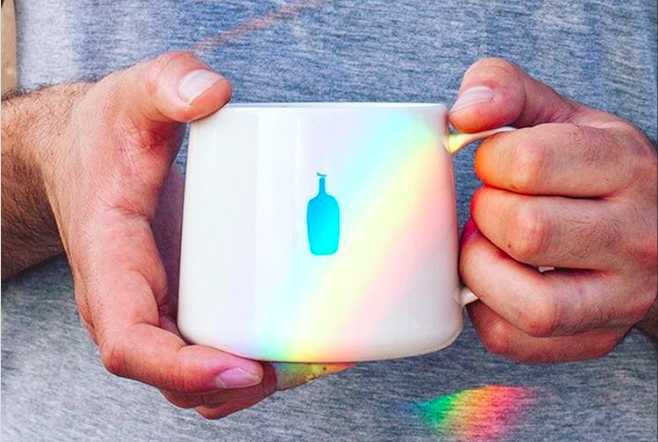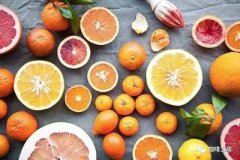Suggestion on hand-flushing parameters of AA Karoguto boutique coffee beans in Kaili, Kenya

Professional barista communication, please pay attention to coffee workshop (Weixin Official Accounts cafe_style)
The suggestion of hand-brewing parameters of AA Karol Goto fine coffee beans in Kenya's Lieli producing area
Suggestions on Practical Parameters of Hand Punching
Hand-washed Kenya AA Karoto: 15g powder, medium fine grinding (small Fuji ghost tooth knife 3.5 grinding), v60 filter cup, 90-91 ℃ water temperature, the first injection of 30g water, 30s steam-stewed, injected to 110g water cut off, wait for the powder bed water to drop to half, then inject water slowly until 225g water, do not use the tail section, water powder ratio 1:15, extraction time 2:12
Known as the Connoisseurs Cup, Kenyan coffee is renowned in the coffee world for its rich aroma, bright and vibrant acidity, full and elegant alcohol and red wine flavor. Caffeine in different producing areas has its own subtle flavor due to the difference of microclimate.
Kenya coffee is mostly grown at altitudes of 1500- 2100 meters and harvested twice a year. Its main characteristic is the distinct fruit fragrance, the common fruit fragrance is citrus. Kenya coffee has a multi-layered taste and juice acidity, perfect grapefruit and wine flavors, moderate body, and is a favorite of many coffee industry insiders.
Kenya coffee varieties
Bourbon Bourbon was first brought to Kenya for cultivation. In the 1950s, Scott Laboratory, an agricultural research institution at that time, made unremitting efforts to select two excellent hybrids SL-28 and SL-34, overturning the long-standing bias that artificial breeding varieties were not superior to natural varieties. SL-28 and SL-34 help Kenya coffee to form its own unique flavor characteristics and establish a perfect reputation in the coffee industry.
According to SL Laboratory botanists, SL28 and SL34 are genetic variants. SL28 has a mixed lineage of French missionaries, mocha and Yemeni tibica. SL28 was bred to produce high quality, pest resistant coffee beans in large quantities.
Although SL28 did not yield as much as expected, the copper-leaf color and bean-like beans had great sweetness, balance and complexity, with notable citrus and dark plum characters. SL34 and SL28 taste similar, except for complex acid, and a good sweet finish, the taste is heavier, richer and cleaner than SL28. SL34 has French missionary, bourbon, and more Tibica pedigree. The beans are similar in appearance to SL28, but are better able to adapt to sudden heavy rain. It is these two important varieties that lead us to the unique Kenyan style: intense fruit acids, rich flavors and beautiful balance.
Coffee growing areas of Kenya
Kenya's coffee-producing areas are mainly concentrated in the plateau areas represented by Mount Kenya. Tropical climate, acidic red volcanic soil for coffee provides a natural suitable growth environment. It is best known for its seven major producing areas, including Nyeri, Sika, Chiambu, Gilinya, Ruiru, Muranga and the west side of Mount Kenya. The main producing areas are Nyeri and Ruiru in the central part.
Kenya Coffee Processing
Large farms usually have separate treatment facilities. A large number of small farmers usually pick ripe coffee berries by hand. Coffee picking is labour-intensive, requiring the whole family to work and even workers to be hired during harvest season. Fresh coffee needs to be transported in time to a cooperative-owned coffee processing plant for pulping, which may be carried by ox cart, pickup truck or truck. After dehulling, Parchment coffee is stored briefly at the cooperative's processing plant and sent to privately owned plants for dehulling.
Kenya's "double wash"
The Kenyan double washing process is also known as Kenyan double fermentation.
The reason is that there are two layers in the washing tank. Generally, coffee farmers will pick out defective beans from the harvested coffee berries in the evening, remove the peel and pour the beans with mucus into the upper fermentation tank, or adopt dry fermentation without entering the pool water. After fermentation overnight, wash them with water the next morning to remove most pectin, and then enter the lower clean water tank for secondary fermentation.
During the secondary fermentation, the circulating water is changed every 3- 5 hours to avoid mold growth and odor, and then introduced into the washing ditch to remove residual pectin.
(The picture shows the cleaning and collection steps after the coffee farmer carries out the second washing)
The whole process takes at least 36 hours, after which the washed beans with shells need to be soaked in a clean water tank for at least 12 hours, and finally dried and dehydrated before completion, which takes several times more time than the total processing time in Central and South America and requires more water resources.
Carlo Goto
This Kenyan Karokoto AA comes from the Neri region of Kenya. This amazing coffee variety grows on the plateau at an altitude of 1700 meters. Only small coffee plantations grow this coffee variety. The Kenyan double washing method, combined with the local temperature difference between day and night, and Kenya's red phosphoric acid soil, make sour and sweet become the main flavor tone of Kenya.
Kenyan coffee classification
Kenya is known for grading coffee beans by particle size. Usually divided into nine grades, according to the bean type, there are PB (ie round beans, accounting for about 10% of the total yield), in addition to E (elephant beans), AA, AB, C, T, TT, MH, ML according to the size. The best coffee grade is bean berry PB, followed by AA++, AA+, AA, AB, etc., in that order.
1) Common categories:
Hand-picked coffee fruit, after manual selection, pick out immature fruit (unripe), overripe fruit (overripe) and other defects, peeling, after about 36 hours of fermentation, placed on the metal rack after drying in the sun, in the processing plant to remove the shell (parchment), become a charm with blue-green appearance Kenya raw beans.
Kenya Kenya
Population: 4,435,300
Central Kenya produces the most coffee beans, and the best coffee beans also come from the central region. Western Kenya is also showing interest in coffee cultivation, such as Kisii, Trans-Nzoia, Keiyo and Marakwetfm regions in Managua.
KIAMBU
Most of the land in this area is occupied by large landowners. But as urbanization expanded, a large number of large landowners found it more profitable to sell their land for urban development than to be a landowner. Coffee beans from this region are named after the place where they are produced, such as Sinka Thinka, Ruiru, Limuru, etc. Many large landowners also run multinational enterprises, so farming focuses on higher yields rather than higher quality. However, there are still a small number of small farmers in this area.
Altitude: 1500-2200m
Harvest: first harvest period: October-December, second harvest period: June-August
Varieties: SL-28, SL-34, Batian
NYERI
The heart of Nyeri is Kenya's volcanoes (extinct volcanoes), the lateritic soil of which produces Kenya's best beans, so agriculture is the most important industry in the region, and coffee beans are one of its main cash crops. Compared to large landowners, Nerini is generally a small farmer cooperative, harvests twice a year, and high-quality beans appear in the main harvest period.
Altitude: 1200-2300m
Harvest: first harvest period: October-December, second harvest period: June-August
Breeds: SL-28, SL-34, Ruiru 11, Batian
These beautiful raw beans are graded according to particle size, shape, and weight:
E: kenyaE, elephant bean, elephantbean, 18 mesh or more (including round beans)
AA: Kenya AA, 17-18 mesh,
AB: KenyaAB, 15-16 mesh, is a mixture of Class A and Class B
TT: AA, AB light beans screened by air flow sorting machine
PB: KenyaPB, 15 mesh and above, round beans
C: 12-14 mesh, and PB light beans screened by an air separator
T: Below 12 mesh, there are many defective beans, broken beans and light beans
HE (Hulled Ears)
2) Raw beans that have not been graded by official standards are UG (ungrade)
E,AA,AB,PB→UG1
C,TT,T,HE→UG2
(Note: Class A above 17 mesh (6.8mm), Class B above 16 mesh (6.3mm), 18 mesh =18/64 inches, 1 inch = 25.4mm)
Flavor Description: Intense dry and wet aromas of lemon and plum. When sipped lightly, it has a variety of amazing aromas such as flowers and lemon. The first part is fresh citrus, lime, and a comfortable woody tone with sage. Plum juice, sweet and sour taste of candied fruit. The last part is caramel aroma.
Important Notice :
前街咖啡 FrontStreet Coffee has moved to new addredd:
FrontStreet Coffee Address: 315,Donghua East Road,GuangZhou
Tel:020 38364473
- Prev

Stories and allusions of boutique coffee beans in Karoguto, AA of Kaili, Kenya
For the exchange of professional baristas, please pay attention to the coffee workshop (Wechat official account cafe_style) the story of AA Karoguto boutique coffee beans in Kenya. The Kenyan coffee variety was first brought to Kenya to grow in Bourbon bourbon. In the 1950s, the then agricultural research institution ScottLaboratory selected SL through unremitting efforts.
- Next

Treatment method of Grinding degree and Baking degree of AA Carragoto Fine Coffee beans in Guoli, Kenya
For professional baristas, please pay attention to the coffee workshop (official Wechat account cafe_style) the processing method of grinding degree and baking degree of AA Karoguto boutique coffee beans in Guili, Kenya. 2) the raw beans that have not been treated by the official standard grading are UG (ungrade) EMagi AABJI (Note: 17 mesh (6.8mm) above A grade, 16 mesh (6.3mm) above.
Related
- Detailed explanation of Jadeite planting Land in Panamanian Jadeite Manor introduction to the grading system of Jadeite competitive bidding, Red bid, Green bid and Rose Summer
- Story of Coffee planting in Brenka region of Costa Rica Stonehenge Manor anaerobic heavy honey treatment of flavor mouth
- What's on the barrel of Blue Mountain Coffee beans?
- Can American coffee also pull flowers? How to use hot American style to pull out a good-looking pattern?
- Can you make a cold extract with coffee beans? What is the right proportion for cold-extracted coffee formula?
- Indonesian PWN Gold Mandrine Coffee Origin Features Flavor How to Chong? Mandolin coffee is American.
- A brief introduction to the flavor characteristics of Brazilian yellow bourbon coffee beans
- What is the effect of different water quality on the flavor of cold-extracted coffee? What kind of water is best for brewing coffee?
- Why do you think of Rose Summer whenever you mention Panamanian coffee?
- Introduction to the characteristics of authentic blue mountain coffee bean producing areas? What is the CIB Coffee Authority in Jamaica?

